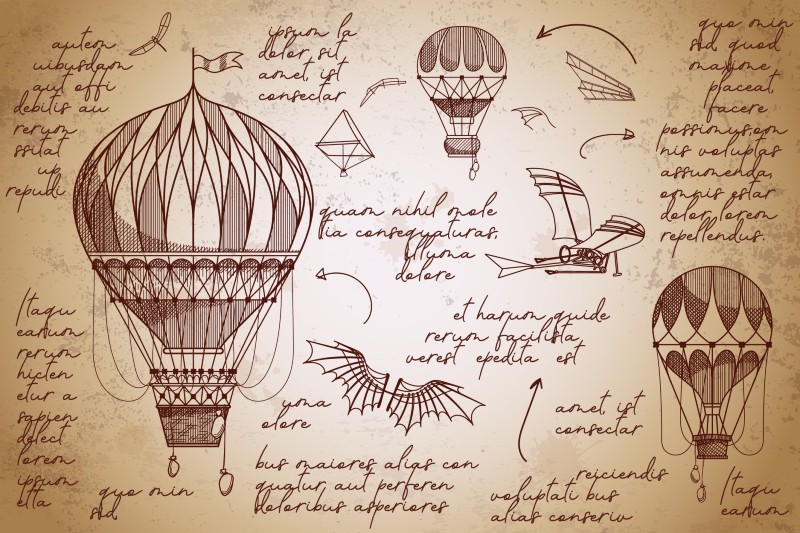Patenting an invention provides those who have come up with an innovative idea with the right to implement and market it on exclusive terms in the country where the patent was applied for and granted. Intellectual property institutions (and thus patents) grant exclusive property rights – that is, monopolies – over ideas and their products. Those who produced the idea can thus obtain a benefit, the so-called “social countervalue”, which consists in the possibility of:
- Exclude others from using the invention for profit: only the inventor, for the duration of the monopoly, can derive profits from marketing the patented product;
- Grant third parties the ability to commercialize the invention upon payment of a sum of money, called a royalty.
Obtaining a patent on one’s invention is essential. This is the only way to recover the investment made in the invention and prevent third parties from copying your innovative idea.
WHAT INVENTIONS CAN BE PATENTED?
Article 45 IPC ( Italian Industrial Property Code) states that “inventions belonging to any field of technology” can be patented. Specifically, the following can be patented:
- Inventions of a product (tangible good);
- Inventions of process;
- And so-called inventions of second use.
The invention of second use concerns already known inventive findings which, when applied in different fields, lead to innovative results. The classic example of this type of invention is Viagra, a drug originally created against cardiovascular disorders such as angina pectoris.
However, some innovative ideas may not be strictly classified as inventions: discoveries, scientific theories and mathematical methods; plans, principles and methods for intellectual activities, for play or business and computer programs; and presentations of information. And still others are excluded by Law from patenting: methods for surgical or therapeutic treatment of the human or animal body and methods of diagnosis applied to the human or animal body and plant varieties and animal breeds and essentially biological processes of animal or plant production.
THE REQUIREMENTS FOR PATENTING AN INVENTION
Once patentable inventions have been identified, it is necessary to check whether certain requirements have been met. In order to patent an invention, it must exhibit the following features:
- Novelty (Art. 46), meaning that the invention must never have been produced, made available to the public, or patented anywhere in the world;
- Inventive step (Art. 48), an invention implies inventive step if it is not obvious to a person skilled in the art from the state of the art. Thus, to patent an invention it must be original, not obvious;
- Industriality (Art. 49), meaning that the invention can be reproduced industrially;
- Lawfulness (Art. 50), finally, the invention must not be contrary to morality or public order.
THE PATENT MONOPOLY NAMELY THE BENEFITS OF PATENTING
The granting of a patent leads to the creation of a monopoly. Only the patent holder can produce, use, market, sell or import the patented product (see Article 66 IPC). In short, the patent holder has the privilege of marketing his or her invention in total absence of competition.
The monopoly established following the granting of the patent, however, is limited in duration: 20 years from the filing of the application, which cannot be extended. In fact, once the term has expired, anyone can reproduce and commercialize the invention.
Please note that patent protection is also territorially restricted. A patent grants protection only within the territory of the country or countries in which it was applied for and granted.
THE UTILITY MODEL (THE SO-CALLED "LITTLE PATENT")
Alongside patents, in some countries including Italy, exists another type of protection: the utility model. This institution protects a modification made to an existing object. This modification then provides a greater utility or ease of use for the object itself. The utility model thus protects the shape of a product that has its own specific technical functionality. The protection lasts for a period of 10 years.
Two theories have been developed to tell a patent from a utility model: the quantitative theory and the qualitative theory. The former, which is favored by the legal doctrine, distinguishes the two types on the basis of the degree of creative contribution or inventive activity. Thus, large inventions, which can be protected by a patent, and small inventions, which qualify for the domain of utility models, exist.
The qualitative theory has been developed mainly by case law and states that:
- An invention can be patented when it concerns a new solution to a technical problem;
- Whereas, in cases where the invention provides greater utility to an existing product, one can “only” apply for a utility model.
In practice, it is customary to call utility model patents ” little patents,” to distinguish them from patents on actual inventions.
HOW TO FILE A PATENT
Before proceeding with the actual filing of the patent, a few activities need to be carried out.
The first is definitely the patentability verification and novelty search (prior to filing the patent application). This activity allows you to verify that the invention you want to protect is new and inventive. The verification is the key tool for assessing possible interference with prior patents and helps to recognize the style and level of detail to be adopted when drafting the patent application. The search is conducted using official databases. Based on the results obtained, experts assess whether to proceed with drafting and filing a patent for invention or not.
If the verification phase is successful, i.e., there are no interferences or other hindrances, it is possible to turn to the drafting of the application, i.e., the drafting of the patent text and the preparation of drawings. It is essential to draft the patent application correctly. Too specific drafting makes the patent more easily circumvented. Conversely, too general drafting can result in failure to obtain the patent.
The last step is the actual filing. The inventor must select which territories he or she wants to obtain protection in and then define the international filing strategy. Obviously, depending on the country and the number of countries, the filing costs also change.
HOW MUCH DOES IT COST TO FILE A PATENT
The cost of patenting cannot be ascertained before evaluating these two main factors:
- The nature of the invention (what kind of invention is it?);
- The extent of protection in territorial terms (how many countries are involved?).
For all practical purposes, it is possible to proceed step by step, applying at the National Office and then extending protection to other countries, through existing international conventions.
Our Law Firm provides analytical quotes after reviewing the descriptive documentation of the inventive finding and gathering the territorial protection intentions of the applicants. In addition, the professionals of the Canella Camaiora Law Firm are included in the list of lawyers providing services that can be financed through the “VOUCHER 3I”, in implementation of Article 5 of the Ministerial Decree 18.11.2019, published in the Official Gazette No. 283 of 3.12.2019. “Voucher 3i – Invest in Innovation” is the incentive for innovative startups to finance the purchase of patent consulting services. Voucher 3I is provided by the Italian Government and is aimed at the acquisition of specialized patent advisory services through the issuance of vouchers for:
- Verifying the patentability of the invention and performing novelty searches prior to filing the patent application (EUR 2,000 + VAT);
- Drafting the patent application and filing it with the Italian Patent and Trademark Office (euro 4,000 + VAT);
- Foreign filing of an application claiming priority to a previous national patent application (euro 6,000 + VAT).
For more information regarding our patent services, please visit our dedicated page.
* * *
Patenting an invention is essential to prevent third parties from profiting from the result of the inventor’s efforts. And it is equally essential to recover the costs incurred in making the invention. The granting of exclusivity is a catalyst for the development of new ideas, especially in fields where the investment of time and money is extensive.
In order to obtain a patent quickly and to reduce the risk of challenges from third parties, a careful analysis of the state of the art as well as the existence of the above-mentioned requirements is essential. It is therefore decisive to turn to qualified lawyers and professionals.
The Canella Camaiora Law Firm deals with inventions, patents and utility models on a daily basis. If you need advice, please contact us.
© Canella Camaiora S.t.A. S.r.l. - All rights reserved.
Publication date: 26 May 2020
Last update: 7 May 2025
Textual reproduction of the article is permitted, even for commercial purposes, within the limit of 15% of its entirety, provided that the source is clearly indicated. In the case of online reproduction, a link to the original article must be included. Unauthorised reproduction or paraphrasing without indication of source will be prosecuted.

Gloria Gelosa
